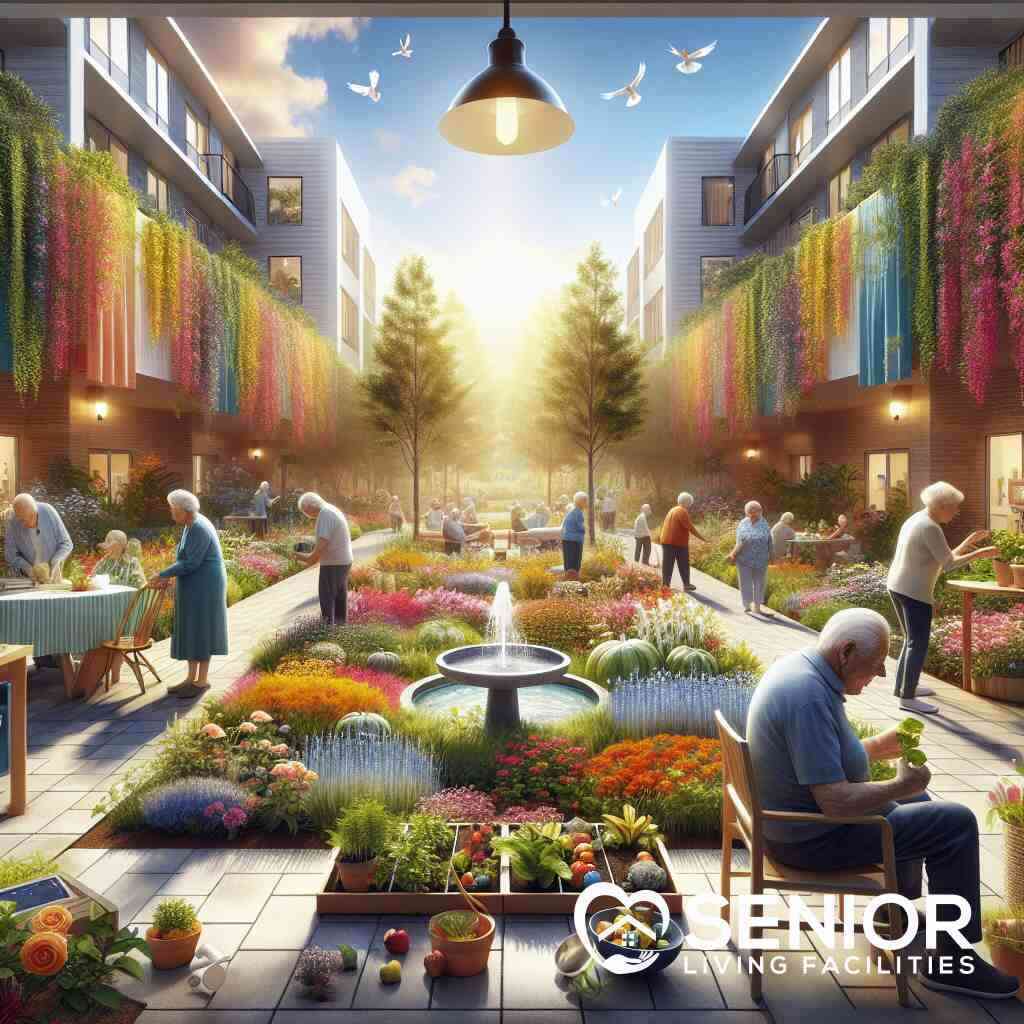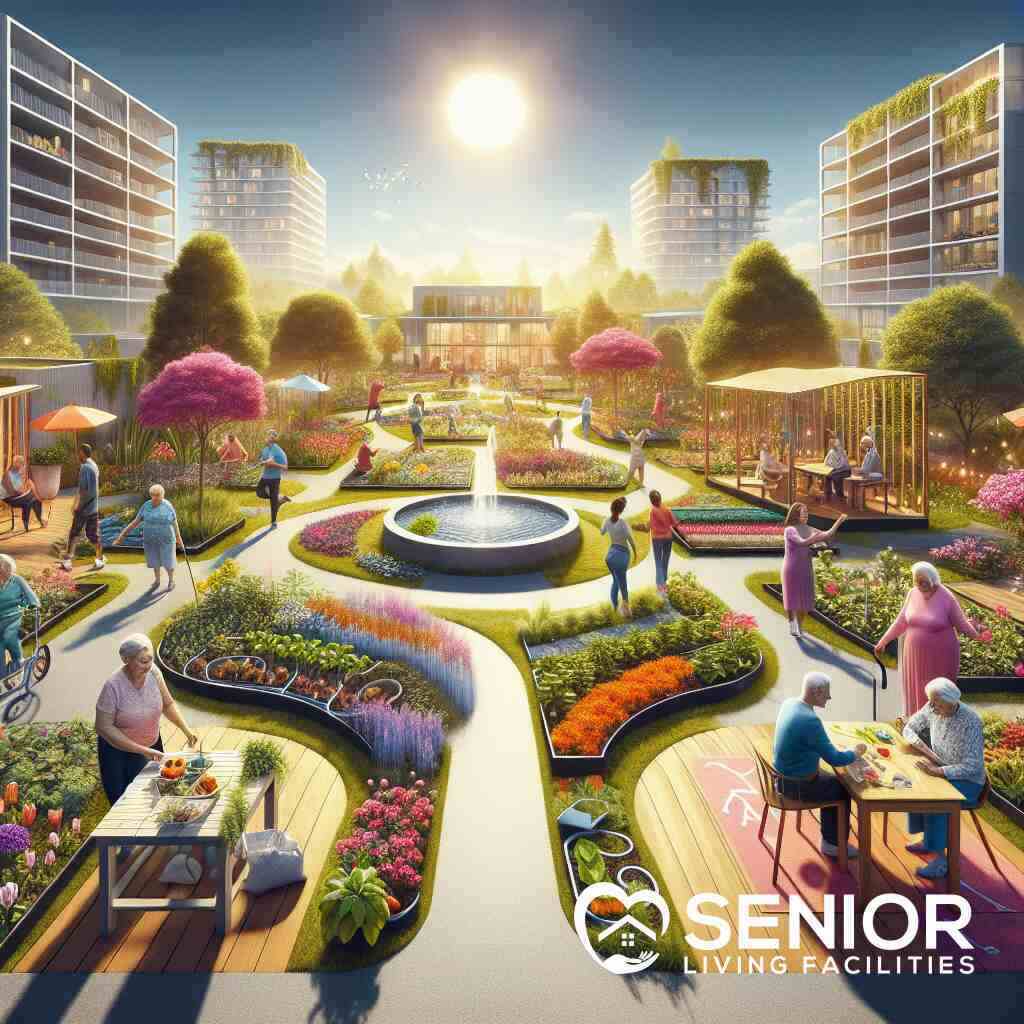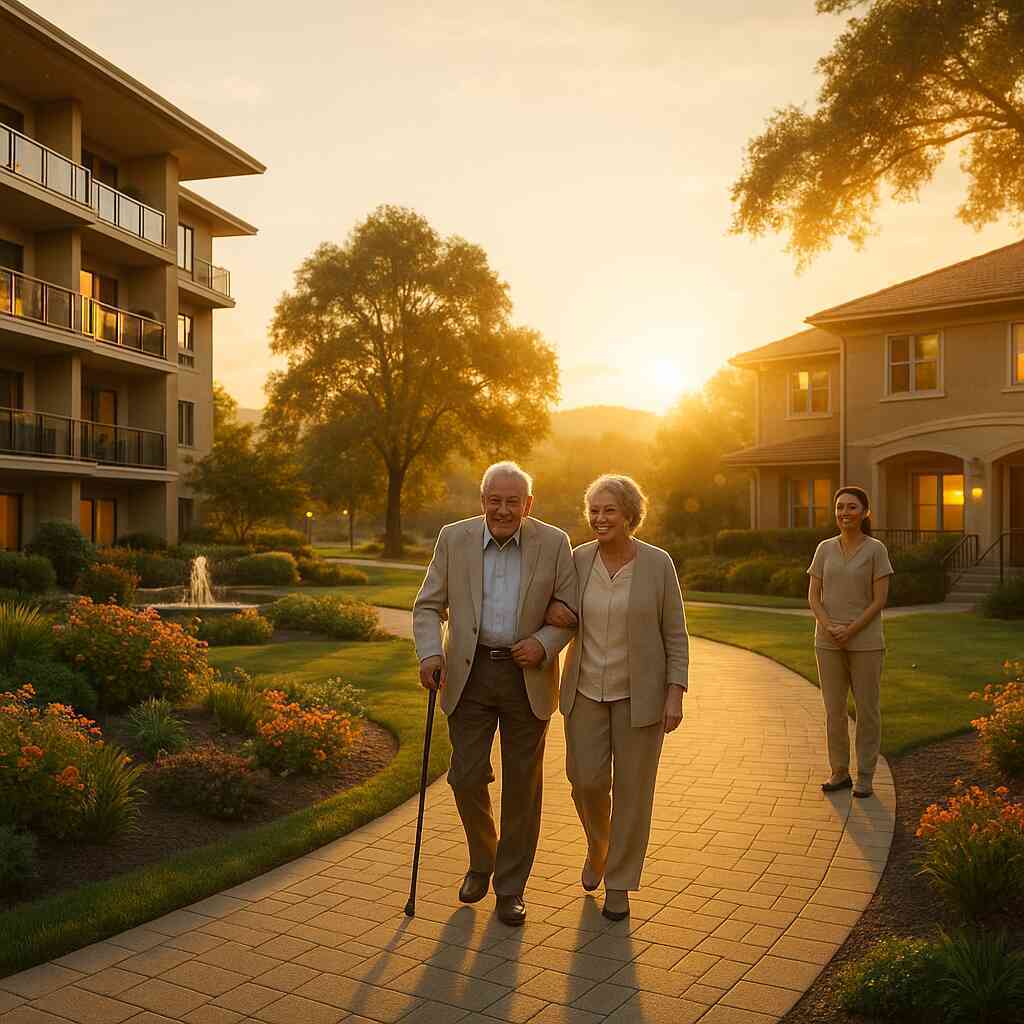
How Senior Living Communities Navigate Evolving Care Needs
November 5, 2025
Opening the Doors to Evolving Senior Care
The Dynamic Landscape of Senior Living Facilities
The realm of senior living facilities is not static; it is a dynamic environment constantly evolving to meet the needs of its residents. Modern senior care requires facilities not only to provide basic needs but also to integrate senior care innovation into their practices. This innovative approach ensures that seniors receive personalized care suited to their unique requirements. With increasing life expectancy, the complexity of care needs is also rising, making it essential for facilities to continually adapt. It’s through these progressive senior communities that we see a transformation in how elderly care is envisioned and delivered.
Embracing Change: A Necessity for Modern Senior Care
In the field of senior care, embracing change is not just important-it is vital. Assisted living locations must be open to the continuous advancements in healthcare, including new technologies and methodologies that improve elderly care management. The integration of technology, such as monitoring systems and digital health records, allows for real-time updates and enhanced communication between caregivers and families. These changes equip seniors with more autonomy and better health outcomes, ensuring their needs are met while respecting their independence. To achieve this, senior living facilities must constantly remain at the forefront of geriatric care innovation.
Understanding the Unique Needs of Today’s Aging Population
Today’s aging population is diverse, with a wide range of needs that require tailored elderly support. Understanding these needs involves recognizing factors such as cultural preferences, lifestyle choices, and health conditions. The goal is to create senior community care models that accommodate each individual, fostering environments where they can thrive. Engaging with this population requires a profound understanding of eldercare dynamics, ensuring services are not one-size-fits-all but instead are comprehensive and individualized. Acknowledging the intricacies of aging, senior communities can develop age-restricted senior communities that cater to vibrant, healthy living in later years.
Innovative Strategies for Personalized Senior Care
Adaptive Care Solutions for Enhanced Independence
Adaptive senior care solutions are at the forefront of modern senior living, enabling older adults to maintain their independence while receiving necessary support. These solutions include a range of services tailored to individual abilities and preferences, ensuring that each senior can live comfortably. By incorporating a mix of physical therapy, personalized exercise programs, and customized care plans, communities can enhance mobility and promote a higher quality of life. Such strategies not only empower seniors but also encourage engagement in daily activities, fostering a sense of community and belonging. Moreover, these approaches emphasize aging-in-place solutions, providing seniors with the option to stay in their familiar environments with increasing care needs over time, leading to a more fulfilling retirement experience.
Senior living facilities must continually update their adaptive senior care solutions to reflect advancements in healthcare and changes in elderly needs. This proactive approach ensures that these facilities remain agile, capable of addressing the diverse requirements of their residents. The focus is on enhancing life quality, safety, and overall satisfaction, thereby redefining the standard for senior living.
Senior Living Personalization: Tailoring Solutions for Each Resident
Personalized senior care is not merely a trend but a necessity in today’s diverse senior population. Senior living personalization involves creating tailored care plans that address specific health needs, dietary preferences, and activity levels. By understanding the personal history and preferences of each resident, facilities can develop an individualized approach that resonates on a personal level, promoting satisfaction and well-being.
The journey toward personalization includes consulting with medical professionals, family members, and residents themselves. Moreover, integrating data from health assessments allows for precise adjustments in care plans and services. Facilities are increasingly focused on personalization as a means of enhancing the living experience by emphasizing autonomy and respect for personal choices. Senior living personalization elevates the standard of care, turning each facility into a community designed to meet the unique needs of those it serves.
The Role of Technology in Progressive Senior Communities
Technology is rapidly reshaping the landscape of senior living communities, providing tools that improve the delivery of care and enhance residents’ quality of life. Innovative technologies such as wearable health monitors, AI-assisted health applications, and digital communication platforms enable more efficient and personalized healthcare strategies. These technological advancements facilitate real-time health monitoring, allowing caregivers to promptly address any concerns, thereby reducing emergency interventions.
Progressive senior communities are leveraging technology to create environments that adapt to the shifting dynamics of senior health care. The integration of digital health records and advanced communication systems facilitates seamless coordination between caregivers, residents, and family members. Such integration ensures that seniors receive timely and accurate care, guided by data-driven insights. Embracing elderly care integration with technology equips senior living facilities to exceed traditional care boundaries, setting new benchmarks in senior health services and supportive living environments.

Holistic Approaches to Senior Wellness
Integrated Senior Services for Comprehensive Health
In today’s senior living environment, integrated senior services play a crucial role in maintaining the overall health and well-being of older adults. These services create a multidisciplinary approach to health care, combining medical, dietary, and therapeutic resources to address the complex needs of seniors. This comprehensive strategy ensures that residents receive personalized care while fostering a supportive environment that adapts to changing health conditions. By amalgamating various aspects of care, senior living facilities can offer a cohesive and holistic health service. This model not only streamlines the management of health services but also enhances the quality of life for residents, promoting a more robust and fulfilling senior experience. In states like Alabama, senior living communities exemplify these integrated approaches, reflecting the importance of tailor-made healthcare solutions.
Wellness Programs Designed for Seniors 55+
Wellness programs tailored specifically for seniors aged 55 and older are pivotal in fostering active and healthy lifestyles. These initiatives focus on offering customized fitness routines, mental health services, and social engagement opportunities. Senior living facilities are continuously developing personalized senior wellness programs that accommodate varying physical abilities and health objectives. By integrating such programs, senior communities empower residents to pursue personal health goals in a supportive and inclusive environment. This proactive approach not only enriches daily life but also mitigates age-related health challenges, ensuring seniors enjoy vitality and longevity. By prioritizing wellness and preventive care, these programs help embed a culture of health that thrives within senior living environments.
Eldercare Dynamics: Managing the Complexity of Aging
The complexity of aging presents unique challenges that require sophisticated management strategies. Eldercare dynamics encompass the multifaceted aspects of aging, including cognitive decline, chronic disease management, and emotional well-being. Senior living facilities must adopt a multifaceted approach by utilizing expertise from various disciplines to navigate these challenges effectively. In-depth understanding of senior health care dynamics allows communities to develop responsive and adaptive care models that cater to the intricate needs of their residents. Through ongoing education and innovation, staff members can enhance their caregiving proficiency, preparing them to tackle evolving eldercare demands. This continuous effort to understand and manage the complexities of aging underscores the commitment of senior living facilities to provide an exceptional caregiving experience for every resident.
Proactive Initiatives for Future-Ready Senior Communities
Developing Senior Community Care Models for Tomorrow
As the senior population continues to grow, there is an urgent need to develop future-ready senior community care models. These models must be visionary, embracing futuristic elderly care strategies to accommodate changing demographics and evolving expectations of senior living. By anticipating future needs, senior living facilities can create dynamic environments that promote wellness and independence through innovative approaches. These strategies involve multi-disciplinary collaboration, ensuring every aspect of senior life is considered and crafted to enhance quality of life. In states like Florida, developing such forward-thinking senior community care models is essential for accommodating the growing number of retirees seeking vibrant living options in these areas.
The Integration of Technology in Adaptive Assisted Living
Technology integration plays a pivotal role in the evolution of adaptive assisted living, providing tools that enhance autonomy and improve care delivery. From artificial intelligence to smart home technologies, incorporating digital solutions into daily operations is crucial for transforming how care is delivered. These technological advancements offer seniors greater control over their environments and health, leading to safer and more engaging living conditions. Facilities that embrace these changes not only improve their service offerings but also foster a more connected and responsive community. By leveraging senior care innovation, communities can significantly elevate the standards of resident care, setting benchmarks that other facilities aspire to reach.
Preparing for the Future of Senior Living Through Continuous Improvement
In order to remain at the cutting edge of senior care, facilities must commit to continuous improvement practices. This involves consistently evaluating and updating care strategies to reflect the latest in geriatric research and technological advances. By fostering a culture of innovation and adaptation, senior living communities can ensure they meet future challenges with resilience and creativity. Prioritizing the professional development of staff is also key, as well-trained caregivers are critical to implementing effective care solutions. Furthermore, aligning with evolving societal values and expectations of elderly care enables senior living facilities to lead the charge in senior living transformation. Embracing such proactive approaches not only enriches the lives of residents but also positions communities at the forefront of the retirement home evolution.

Conclusion: Navigating the Journey of Senior Living Evolution
From Strategy to Implementation: A Roadmap for Success
Successfully navigating the future of senior living requires a strategic approach that seamlessly transitions from planning to implementation. This involves setting clear goals for the adoption of adaptive care solutions and ensuring the necessary infrastructure is in place, as discussed in navigating the senior living facilities in modern Florida. Facilities should prioritize continuous staff training on emerging technologies and personalized care practices, fostering a proactive environment ready for any challenge. The roadmap to success in senior living also involves integrating futuristic elderly care strategies that anticipate the evolving needs of residents. By aligning strategy with action, communities develop the agility needed to thrive in a dynamic and competitive landscape, ensuring a quality living experience for all seniors.
The Ever-Changing Art of Senior Care Management
Senior care management is an ever-changing art that balances tradition with innovation. As eldercare dynamics become increasingly complex, the need for unique and innovative approaches to manage aging challenges grows. Senior living facilities must not only adapt to changes in healthcare technologies but must also enhance their core services to meet the dynamic needs of today’s aging population. Through the lens of senior living communities transforming care, facilities must continuously redefine their practices to remain relevant and effective. This continuous adaptation ensures the facilities provide care that is both comprehensive and forward-thinking, keeping pace with the fast-evolving realm of geriatric care.
Empowering Communities to Embrace the Future of Senior Living
Empowering communities to embrace the future of senior living is essential for ensuring vibrant and supportive environments for older adults. By championing proactive senior care initiatives and facilitating technology integration, communities can navigate the retirement home evolution with confidence. For example, leveraging insights from developments in senior living communities transforming care can offer pathways to enhance resident experiences holistically. It is through such empowerment that residents enjoy not only the safety and comfort of their communities but also the innovative services tailored to their unique needs. This empowerment ultimately leads to more fulfilling and active lifestyles, positioning senior living facilities as leaders in shaping the future of care.
Frequently Asked Questions
Question: How do Senior Living Facilities accommodate the dynamic and evolving care needs of the senior population? Learn more in our guide to revolutionizing senior living facilities by 2025.
Answer: Senior Living Facilities are at the forefront of senior care evolution by offering personalized senior care that adapts to the unique needs of each resident. We provide a variety of adaptive care solutions, including aging-in-place options, tailored elderly support, and specialized services that cater to diverse health conditions and lifestyle preferences. Our commitment to geriatric care innovation ensures that we’re continually updating our approaches to meet the ever-changing landscape of senior living.
Question: What strategies do Senior Living Facilities employ to integrate technology into their services?
Answer: At Senior Living Facilities, integrating technology is a key component of our senior living transformation strategy. We utilize senior care technology integration, such as digital health records and wearable health monitors, to provide real-time health updates and foster effective communication between caregivers and families. This helps us create progressive senior communities where residents enjoy enhanced autonomy and safety. Our focus on technology ensures that seniors receive personalized and efficient care, staying connected with loved ones and health professionals.
Question: How do Senior Living Facilities personalize care to meet the specific needs of their residents?
Answer: Personalization is a cornerstone of our approach at Senior Living Facilities. We engage with each resident and their families to develop individualized care plans that consider health needs, dietary preferences, and activity levels, as outlined in our comprehensive guide to evaluating senior living facilities. This process involves senior living personalization, using health assessments and consultations to tailor our services to each resident’s unique circumstances. By emphasizing senior wellness programs and tailored elderly support, we ensure our residents enjoy a comfortable and fulfilling lifestyle that aligns with their personal goals.
Question: In the blog How Senior Living Communities Navigate Evolving Care Needs, what role do wellness programs play in supporting seniors?
Answer: Wellness programs are integral to our holistic senior health strategy. As highlighted in the blog “How Senior Living Communities Navigate Evolving Care Needs,” we offer senior wellness programs designed for individuals aged 55 and over, focusing on physical fitness, mental health, and social engagement. These programs are adaptable to various physical abilities and health objectives, empowering our residents to pursue personal health goals and maintain an active lifestyle. By fostering an environment that prioritizes holistic wellness, Senior Living Facilities nurture vibrant communities where seniors thrive, as outlined in senior living facilities for wellness growth in Maine.
Question: How do Senior Living Facilities ensure the delivery of integrated senior services for comprehensive health care?
Answer: At Senior Living Facilities, we champion the concept of integrated senior services to provide comprehensive health care. This involves a multidisciplinary approach that combines medical, dietary, and therapeutic resources to effectively address the complex needs of seniors. By implementing cohesive health services, we enhance the quality of life for our residents, ensuring they receive the support and care necessary for their well-being. Our facilities are designed to be responsive and adaptive, reflecting our commitment to holistic senior health and eldercare dynamics.


